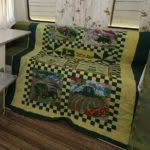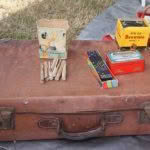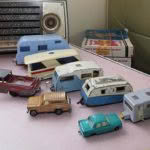How to do-up your vintage or retro caravan: Excerpt from Vintage and Retro Caravans Downunder
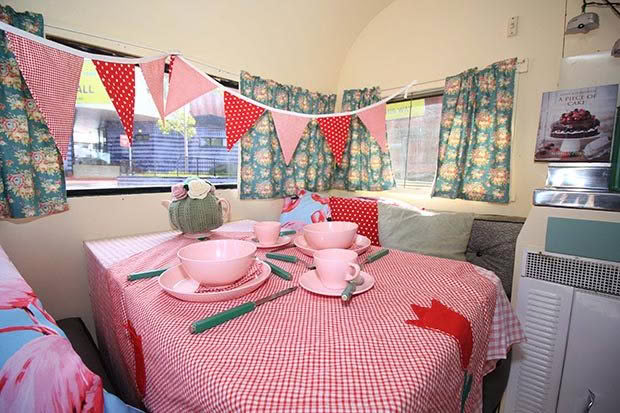
Doing up a vintage or retro caravan is a bit like doing up a vintage car. Not only is it addictive, but you are also faced with a number of very similar decisions to make. Can you restore it back to original or are you better to put your own spin on it like the hot-rod boys? What of the existing layout still works or is worth saving? Is it a gut job?
Excerpt from Vintage and Retro Caravans Downunder
Words: Marilyn Jessen
Don Jenssen’s father hand-built the furniture in each of our Liteweight Kiwis, so we were very keen to retain all of it. That doesn’t stop us dreaming about the 14-foot Kiwi in the Catlins, which has no interior at all. In those dreams, we are able to indulge our imaginations and come up with whatever layout and styling we choose.
Yes, in case you are wondering, Don (my husband) does let me have pretty much free rein when it comes to the interiors. He gets to do the construction work – under instruction, of course!
How do we get started when we restore a caravan? Our first stop is a list of must-haves, which, if you’re a seasoned caravanner, you’ll find easy to create. In the 14-foot Kiwi, our list, over and above the basics which were already in the van, included the following:
- a shower/toilet compartment
- a 12-volt power system so that we could go totally off-grid
- a full-length overhead to replace the one that was missing
- a pantry
- a shoe drawer, so I don’t have to trip over them at the doorway or fossick under the bed
- a big drawer for bedding
- a place to secure and charge devices.
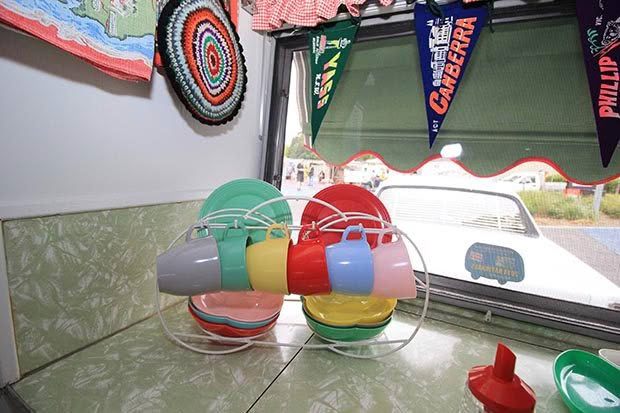
We both agreed that everything should have a place and be in its place. We didn’t want to be unpacking our bits and pieces on arrival and then repacking them again for towing, particularly as we try not to have anything in our van that we don’t use on a daily basis.
After many ‘sit ins’ in the van, we agreed on a floor plan and where everything would go. That left Don free to get on with the construction while I turned my head to the interior decor.
When we restored our 1956 Kiwi, its original colours were clearly visible. We retained the red Cracked Ice Formica, so that formed the basis of the colour scheme. We weren’t really into retro vanning at that stage, so we just chose upholstery fabric that we liked and curtaining that we didn’t like so much, but was all we could find that worked at the time.

With our second resto, the 1962 Silver Planet, we wanted to be more period correct and chose a bright turquoise and white for the exterior. We lucked out when we found – after we removed many coats of paint – that the colours we had chosen just happened to be its original colours.
The inspiration for the turquoise actually came from a retro cake tin in the shape of a fridge. Sometimes all you need is one item to get inspired! Later in the book you will see the three-chrome striping from the tin replicated on both the inside and outside of the caravan.
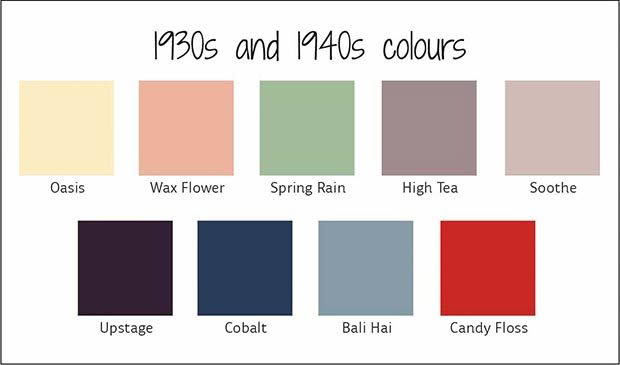
With more experience of vintage vanning and having been privileged to see so many gorgeous vintage vans both inside and out, we were determined our new Kiwi would be period appropriate. I researched 1950s decor until I felt I had a pretty good handle on the colours and styles. Opting for cream and a muted teal seemed a good reflection of the fifties colour schemes.
The exact paint colours would come later, once the upholstery fabric and curtaining had been chosen. If we had needed new laminate we would have started with that. It always pays to start with the item which has the most restricted range of colour choices.

I became absolutely fascinated by the colours and styles of each decade. The 1930s and 1940s were coloured by firstly the Great Depression and secondly by the Second World War, meaning that practical, hard-wearing, serviceable colours were to the forefront. Fabric shortages prompted recycling/upcycling of both interior decor furnishings and fashion. Floral patterns and motifs such as cherries, apples, chickens and roosters were very popular, along with checked gingham.
Formica table tops, while more often associated with the fifties, were introduced in the 1940s, along with glass drawer knobs, Art Deco-inspired lights and chrome or Bakelite handles. Steaming wood created the curved furniture typical of the Deco period. Bold geometric linoleum took over from wooden floors, and in the late 1940s carpet became popular. Typical accessories included wooden radios, and breadboxes and canisters made of chrome, enamel or Bakelite, usually in the popular shades of red, white, cream or pale green.
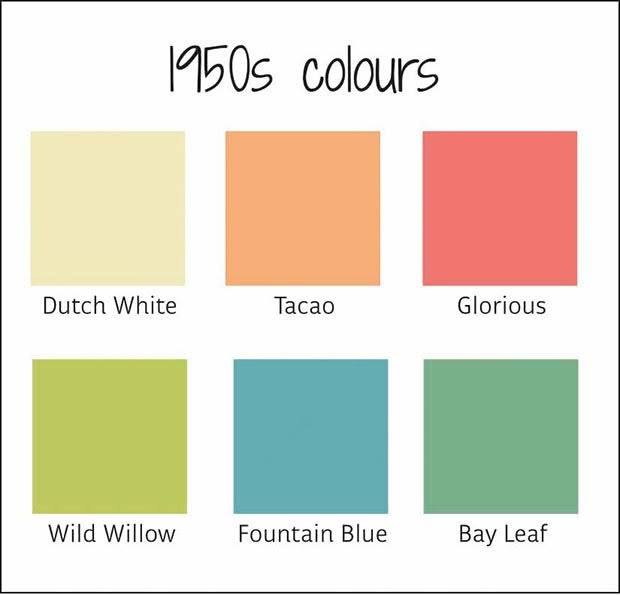
By the 1950s, the restrictions of post-war life were slowly being left behind and a wider range of colours was embraced. With practicality no longer the number one priority, colours became more pastel, with pink, turquoise, mint green and pale yellow being the most popular colours. Fruit and flower patterns and atomic graphics with space and galaxy patterns were popular for wallpaper, tablecloths, curtains and upholstery.
Caravan bench tops in Cracked Ice laminate in green, red, yellow, fawn and grey were popular throughout the fifties. Linoleum tiles with coloured tiles placed to create a pattern and the black-and-white check lino now synonymous with the retro diner made its debut.
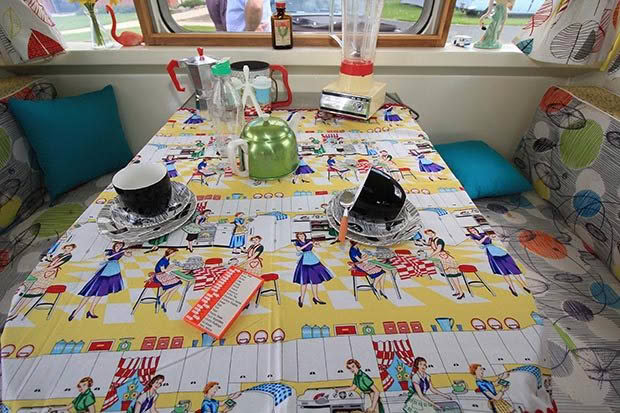
Plastic appears for the first time in accessories, and chrome, stainless steel and melamine became popular for home decor products from appliances to canisters to lamp shades. New synthetic fabrics and blends brought harder wearing and greater colour fastness to fabrics, making them ideal for caravans.
Most people will remember the 1960s for the tie-dyed, psychedelic, paisley or large floral and geometric prints that abounded in fashion wear. Think pant suits, sheath dresses, miniskirts and high boots in the new fabrics for the decade – Crimplene, bonded rayons and polyesters. Interior decor and modern art with geometric and large floral patterns and bright colours found their way into the caravan scene via brightly coloured exterior paint colours and bold curtain designs.
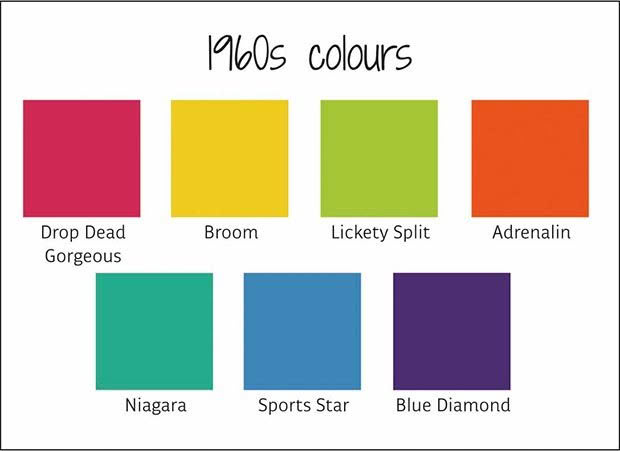
Fashion and interior decor became a statement of what you believed in, with conservative, hippie and celebrity styling all having their own followers. Plastic, in bright colours, was a popular furniture material, and wallpapers and fabrics embraced the large geometric prints. Travel cups made from spun aluminium graced picnic sets and were a regular feature in caravans.
The 1970s were characterised by earthy shades of brown, bright yellows, oranges, reds and greens. The large geometric patterns of the sixties followed into the seventies in wallpapers and soft furnishings. Many of us are still trying to lose the avocado and olive bathroom ware in our homes that were so on trend in the seventies.
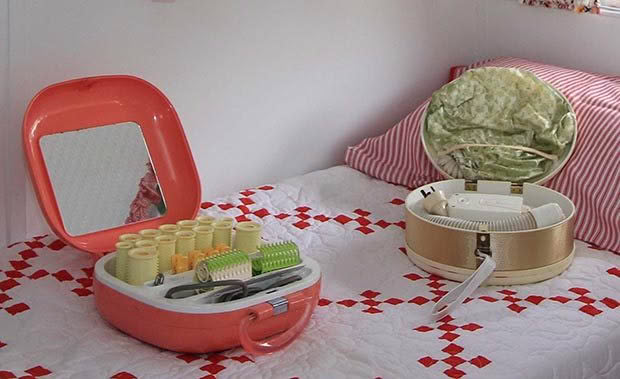
Exterior colours for caravans were also bright. Liteweight Caravans used the earthy seventies hard brights, substituting the Saratoga with the Blue Diamond of the sixties. Interiors picked up these bright colours in the duplex (printed on both sides) curtaining and the upholstery, which was made in the latest coated nylon fabrics.
Furniture was made from prefinished plywood or panel print where the woodgrain was printed onto the surface of the plywood. Popular home items included lava lamps and fondue sets, and macramé became the handcraft of the decade.
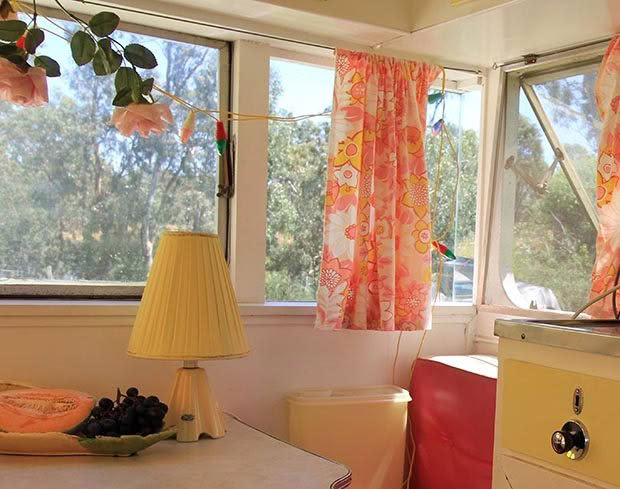
What we love about vintage caravan rallies, in addition to meeting wonderful like-minded people, is the chance to look at other interior designs. The ones which always fascinate us are those that are done to a theme. Whether its beach-themed, with driftwood and rope, surfie-themed complete with roof racks and boards, garage-themed, with number plates and petrol pump, or totally rock ’n’ rolled as pictured here, there is so much to catch the eye.
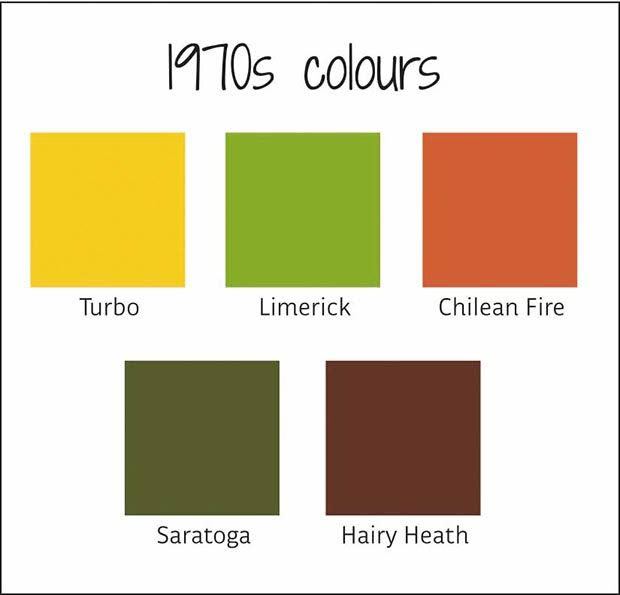
We have acquired a rather eclectic mix for our caravan, but really admire the commitment and discipline of the themers who stick with one central idea and build their decor around it. We are constantly on the look-out for bits and pieces to add to the decor and love looking at everyone’s collections.
For some, it’s new in retro style, for others it’s vintage to the period, and for others still it’s treasured heirlooms with a story.
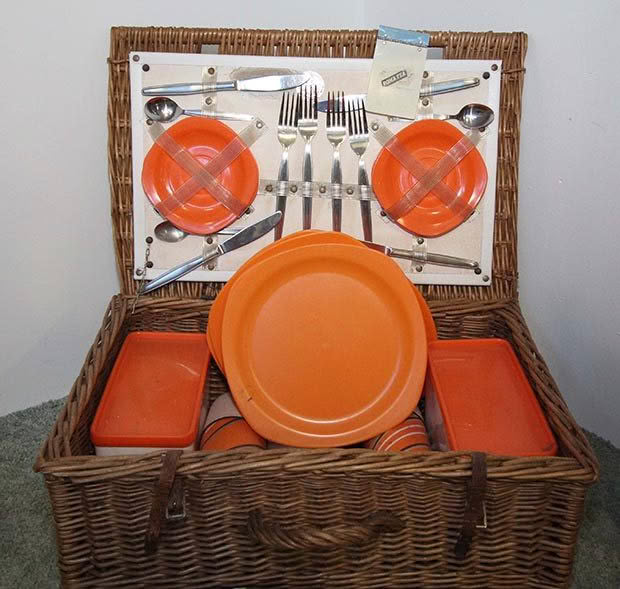
Doing up a vintage van brings out people’s creativity. As a knitter and sewer from way back, it was only natural that I would make our squabs (caravan seating) and curtains. When choosing a design for our second restoration, I researched the cars of the era and fell in love with the combination of vinyl fluting and fabric squabs with piped edges.
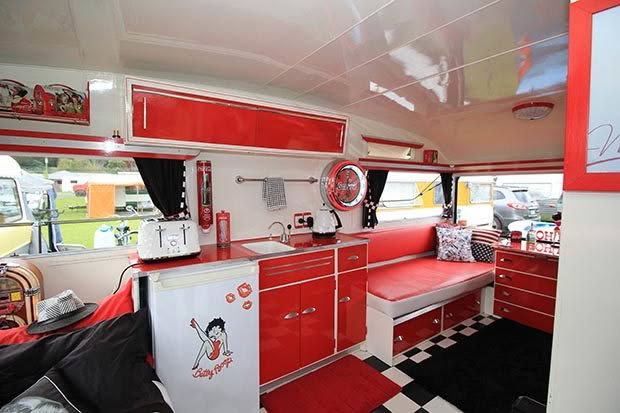
One year I was in the mood for crafting and hit upon the idea of printing a photo of our caravan onto fabric to make a cushion for Don for Christmas.
Unfortunately, the printing quality was not up to scratch, so I appliqued over the caravan with new fabric. While it’s not what was originally envisaged, nor should you look too closely at the stitching, it has certainly become a talking point with people visiting our van. In our travels, we have seen so many wonderful craft projects – felting, quilting, embroidery, button lamps, cushions, and crocheted blankets.
One of the best things about decorating a caravan is that you don’t have to live in it full-time, which means you can go totally over the top. What’s more, if it’s really different from your home, the minute you step inside the van you know you’re on holiday.
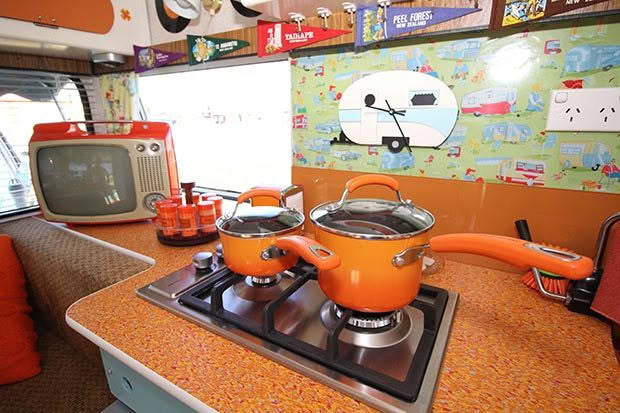
We’ve even heard someone (who shall remain nameless) say they have slept in their caravan in their backyard just to get away from it all. There really is only one rule and that is ‘there are no rules’. Put that creative energy to good use and have a go. Chances are you’ll get the bug just like us and so many other vintage vanners!
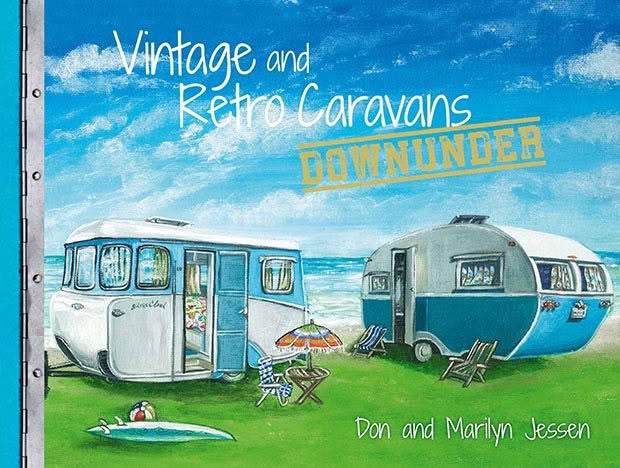
Vintage and Retro Caravans Downunder by Don and Marilyn Jessen, RRP $49.99. Is for sale exclusively through Paper Plus, Paper Plus Select and Take Note
READ MORE
How to do-up your vintage or retro caravan: Excerpt from Vintage and Retro Caravans Downunder
 This article first appeared in NZ Life & Leisure Magazine.
This article first appeared in NZ Life & Leisure Magazine.
